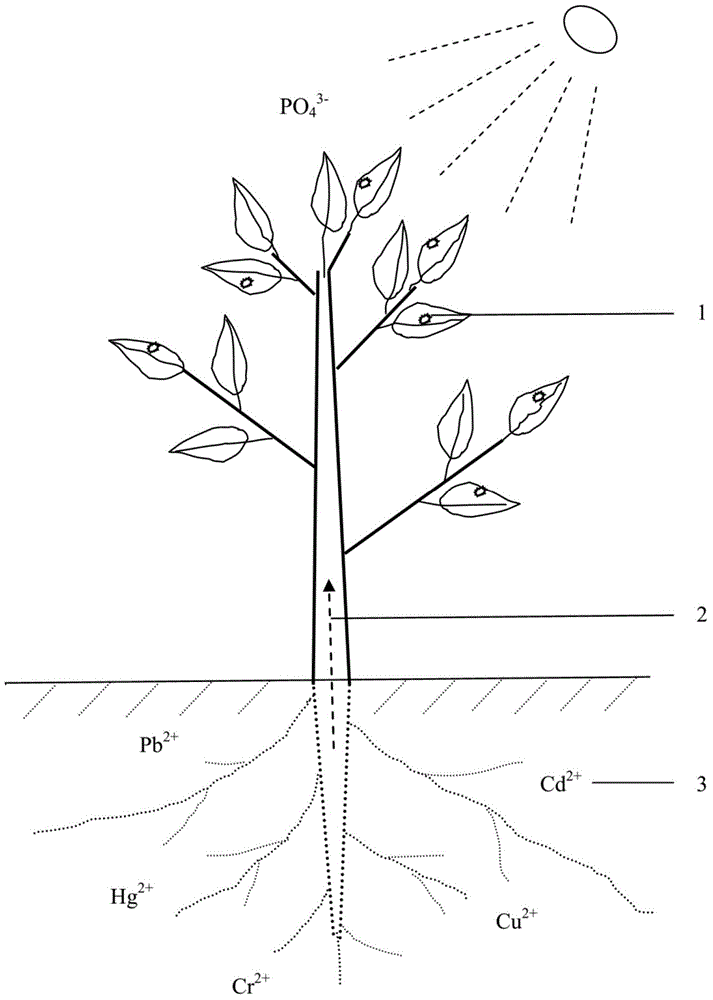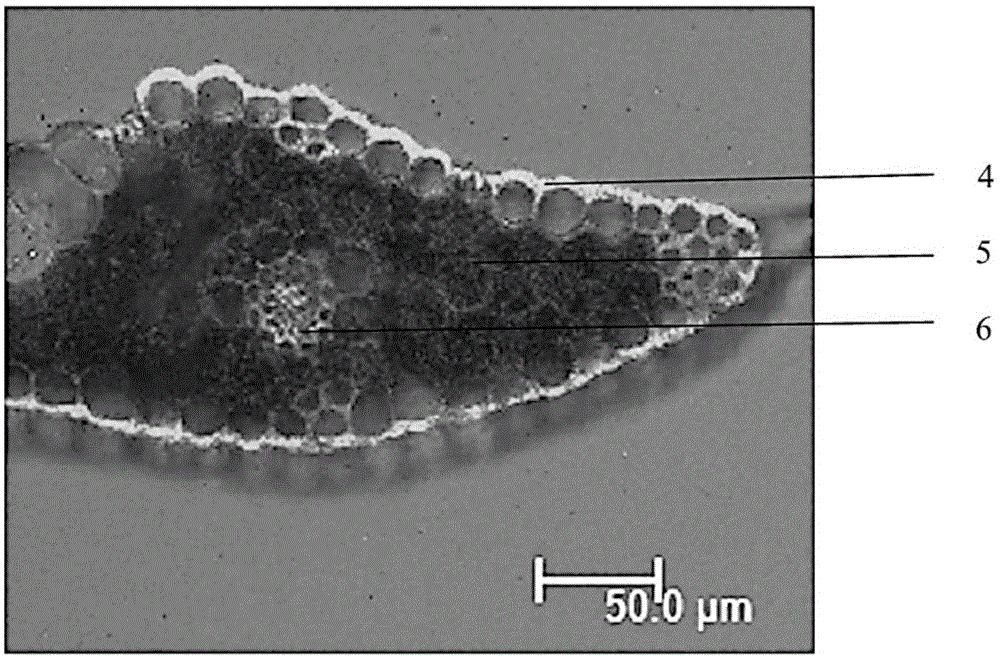Method for improving repairing efficiency of heavy metal polluted plants
A phytoremediation and heavy metal technology, applied in botany equipment and methods, horticultural methods, horticulture, etc., can solve the problems of reducing the scope of application of metal pollution, increasing the risk of secondary pollution, polluting surrounding water bodies or farmland, etc., and achieving efficiency Improvement, easy to use, and the effect of improving tolerance
- Summary
- Abstract
- Description
- Claims
- Application Information
AI Technical Summary
Problems solved by technology
Method used
Image
Examples
Embodiment 1
[0040] Remediation of heavy metal cadmium contaminated soil:
[0041] The soil to be repaired is located in the mining area and has been polluted by tailings and cadmium-containing wastewater for a long time. The average content of heavy metal cadmium in the soil is as high as 102mg / kg. Most plants cannot grow normally on such soil and will die due to cadmium poisoning. Bare, it is very easy to spread and cause serious pollution events to surrounding farmland and water bodies.
[0042] The cadmium pollution in the soil is repaired by planting bluegrass. On the one hand, the cadmium pollution in the soil is gradually removed by harvesting the stems and leaves of the aboveground part of the plant by using the root system of bluegrass to absorb and transport to the aboveground part. On the one hand, bluegrass can also form a lawn cover layer on the surface to avoid the risk of spreading contaminated soil.
[0043] Bluegrass is a perennial turf plant, which has a very strong tole...
Embodiment 2
[0050] Remediation of heavy metal (lead, cadmium, copper) compound polluted soil:
[0051] Phytoremediation of heavy metal pollution in the soil is carried out by planting blue cabbage, which is a cruciferous herb, sown in March and harvested in October. The soil plowing and leveling before sowing and the cultivation and management measures after sowing are the same as the conventional ones. During the growth period of the seedlings, a small amount of irrigation is used to avoid the spread of polluted soil caused by surface runoff caused by excessive irrigation.
[0052] After the seedlings grew to 6 leaves, the plant leaves were sprayed with a restoration accelerator every 15 days, wherein the phosphate root was derived from superphosphate, and its concentration was 0.3wt%, and the concentration of the penetrant JFC was 0.03wt%. After spraying, phosphate ions quickly penetrate into the leaf tissue, and continuously chemically react with the soluble heavy metals in the leaf to...
Embodiment 3
[0057] Remediation of heavy metal polluted water bodies:
[0058] The repair object is the small river in the tailings area, which has been polluted by heavy metal wastewater in the mining area for a long time, and the heavy metal content seriously exceeds the standard. The main heavy metals that exceed the standard include: lead, cadmium, copper, zinc, etc.
[0059] Phytoremediation of heavy metal pollution in the water body by planting water hyacinth on the water surface. Water hyacinth is a floating water plant of the genus Hyacinthaceae. When the temperature reaches above 12°C in spring, plant water hyacinth seedlings in the water body to let the water hyacinth grow in the polluted water. Grow until it completely covers the water surface. When the main stem of the water hyacinth seedling grows the 8th leaf and the coverage of water body plants reaches more than 85%, it begins to spray repair accelerator on the water hyacinth leaf surface every 30 days or so, wherein the ph...
PUM
 Login to View More
Login to View More Abstract
Description
Claims
Application Information
 Login to View More
Login to View More - Generate Ideas
- Intellectual Property
- Life Sciences
- Materials
- Tech Scout
- Unparalleled Data Quality
- Higher Quality Content
- 60% Fewer Hallucinations
Browse by: Latest US Patents, China's latest patents, Technical Efficacy Thesaurus, Application Domain, Technology Topic, Popular Technical Reports.
© 2025 PatSnap. All rights reserved.Legal|Privacy policy|Modern Slavery Act Transparency Statement|Sitemap|About US| Contact US: help@patsnap.com



